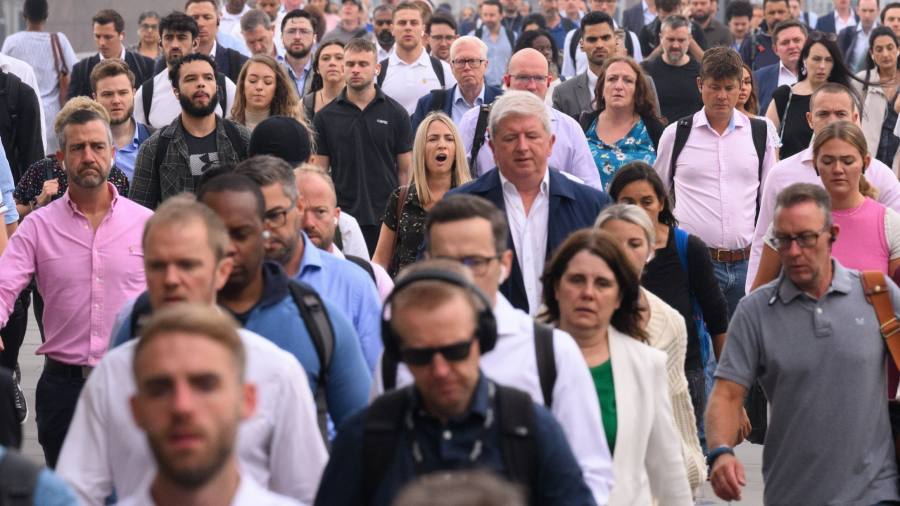UK unemployment hit a fresh multi-decade low in the three months to August as long-term sickness kept more older workers out of the labour market, official data showed on Tuesday.
The Office for National Statistics said unemployment stood at 3.5 per cent — 0.3 percentage points down on the quarter and the lowest since 1974 — due to a fresh rise in economic inactivity.
However, the figures also confirmed recent survey evidence that a red-hot labour market is starting to cool as both employers and workers worry about the effects of sky-high inflation and rising borrowing costs.
Employment fell in the three months to August for the first time since the disruption of Covid-19 lockdowns eased, as a worsening economic outlook began to weigh on hiring.
The employment rate was 75.5 per cent, 0.3 percentage points lower than the previous quarter and a full percentage point lower than before the pandemic.
The ONS noted that this followed a quarter in which the employment rate had been unusually high and inactivity unusually low, suggesting the underlying change in the economy might be less.
However, the number of vacancies fell for a third consecutive quarter — at its sharpest rate since mid-2020 — although it remains near historic highs, with more job openings than there are unemployed people looking for work.
The figures held little consolation for monetary policymakers, who are concerned that wage pressures will remain strong even as the economy slows, because so many people have dropped out of the labour market since the start of the pandemic.
The latest figures showed no let-up in this trend, with inactivity rate up by 0.6 percentage points on the quarter to 21.7 per cent, driven by long-term sickness among older workers and by students who were not working or job hunting.
Samuel Tombs, at the consultancy Pantheon Macroeconomics, said the figures gave reassurance that employment was “not in freefall” but also that wage growth was still too strong for the Bank of England to tolerate.
Earnings fell in real terms at near-record rates, as the surge in inflation ate into household incomes. But the ONS said nominal wage growth was the fastest on record, outside the Covid period when the figures were distorted. Growth in average weekly earnings, including bonuses, strengthened to 6 per cent — with even faster growth in the private sector, and public sector workers lagging far behind — while regular earnings grew 5.4 per cent.
UK chancellor Kwasi Kwarteng said the figures showed that “the fundamentals of the UK economy remain resilient, with unemployment at its lowest point for almost 50 years”.


